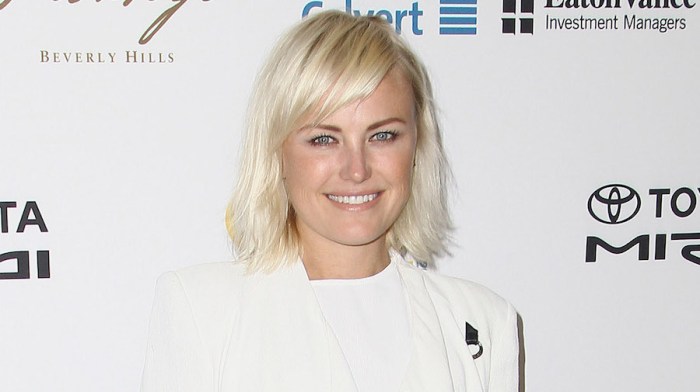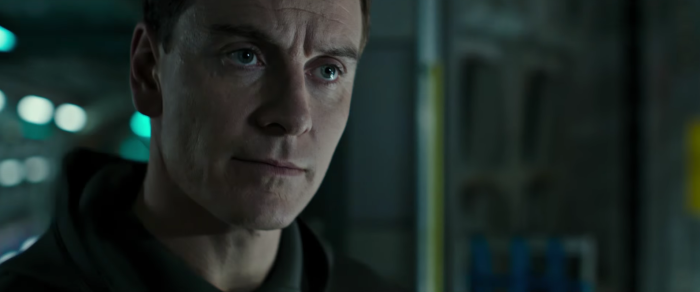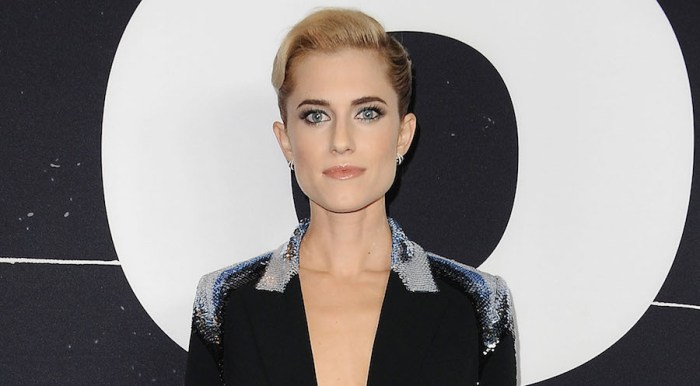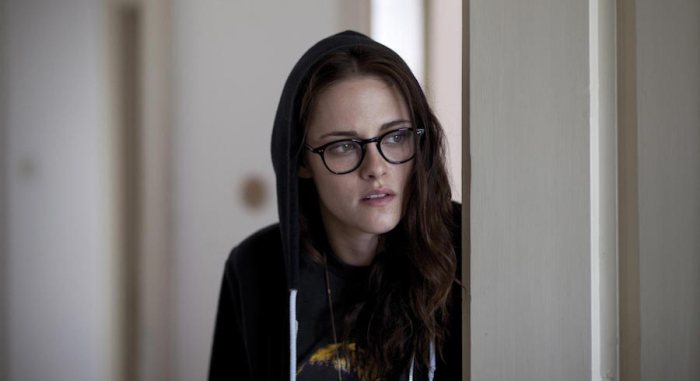We’re done complaining about blockbusters. We’ll never be happy that today’s multiplexes are overcrowded with comic book movies and animated fare about talking animals, at the expense of variety. But we’re bored filing this charge day-in-day-out. So let’s focus on other ways the movies can be better. And rather than be Negative Nellies, we’ll stay positive. Here seven things we saw in the movies of 2016 that we hope will become trends this year, or at least in the near future. RELATED: The top 10 best films of 2016 (and 15 more that were pretty great, too) Maybe corny tear-jerks shouldn’t be extinct?
Mid-sized budgets are all but dead in today’s Hollywood. With them went the middlebrow movie — the manipulative weepies, from “Dances with Wolves” through “Shine,” that used to soil the hankies of the masses and annoy snooty critics. As snoots, we say good riddance — except that, right now, a good, corny, manipulative tearjerker, when done right, might make us feel better about the world, even if temporarily. Such was the case with “Hidden Figures,” a true life tale of black, female NASA geniuses overcoming both racial and gender prejudice in the early 1960s, converting the small-minded along the way. It’s a good enough film — strongly acted, interesting as underknown history, even subtle at times — that it would have played well during any era. But right now we’re raw, and even the jaded cinephile who’s seen it all occasionally needs a reminder to believe in yourself, go after your dreams, don’t be a stupid bigot, etc. (See also: the old school Disney toon “Moana.”) The art house should go weird(er)
This spring, Americans couldn’t get enough of a comedy in which the undateable were surgically turned into animals. That film was “The Lobster.” It didn’t make “The Secret Life of Pets” money, but it did make art house blockbuster money (which is to say about $8 million, which, trust us, is a lot). And it did that despite being (or maybe because it was) a coal-black weirdo that suggested couples were together less out of love than out of a marriage of loneliness and fear of social ostracization. Who knows why it hit a nerve? (Though “Have you seen ‘The Lobster?’” has been a fine Tinder first line for singles.) Whatever the reasons, “The Lobster” is one of several cases this year in which movies that would have never caught on at the multiplex, even during the gritty New Hollywood ’70s, proved unlikely (relative) cash cows. The New Zealand brush romp “Hunt for the Wilderpeople” also played for months, as, hopefully, will “Toni Erdmann,” a three-hour German comedy that has the same plot as an Adam Sandler movie and is at least as funny as “Sausage Party.” The docudrama “Loving” — about interracial marriage pioneers Richard and Mildred Loving — isn’t “weird,” except in this sense: It wasn’t an old school tear-jerker. Instead it was unfailingly, stubbornly low-key, shorn of big speeches, big crying jags, even the usual fiery courtroom climax. And yet this renegade docudrama made more than double director Jeff Nichols’ other, more high-profile film from this year, the sci-fi hybrid “The Midnight Special.” The lesson: Skip the usual Sundancey dramedy route and go bold. You might even make money that way. Religious movies don’t have to suck
They came at a steady clip: those cloying, super-earnest, for fundies-only movies about religion (always Christianity). In 2016, the multiplexes saw the now di rigueur smattering of chintzy cheapies from backwater indie studios like Pure Flix, sometimes featuring has-been names. (Melissa Joan Hart proves “God’s Not Dead 2”!) And the studios sometimes got in the mix, too. (Jennifer Garner finds “Miracle from Heaven”!) The year also saw two, arguably three religious movies that weren’t sinfully awful. This was the year Mel Gibson had himself a genuine hit after eons in the dog house, even if it required him not physically being in it. “Hacksaw Ridge,” his ultraviolent look at pacifist soldier Desmond Doss (played by Andrew Garfield), quietly made more than the latest Michael Bay (“13 Hours”) and the latest “Ice Age.” This was all despite being vomitingly gory, and despite being another chance for Mad Mel to wrestle with his Old Testament version of Christianity on big screens. Say what you will, but Mel’s deep, deep, horrifyingly messed-up problems are fascinating to behold. Then there’s “Silence,” from another, very different Catholic filmmaker. Over nearly three hours, Martin Scorsese tangles with similar issues of faith and suffering. But where Gibson is battling demons, Scorsese is quietly questioning. Are his Portuguese Jesuit priests (including Andrew Garfield, again) bringing salvation to 17th century Japan? Or are they condemning their converts to unimaginable punishment in a nation that has outlawed their religion? Is their god even real? Or are they deluding themselves with aspirations to higher glory? There are no answers, and Scorsese gives his film plenty of room to grapple with the eternally elusive. We’ll soon learn if the masses accept “Silence,” as they did “Hacksaw Ridge.” (Probably not.) But if nothing else, its excellence should inspire other filmmakers to take religion as a cinematic subject seriously. (A quickie shout-out to “Risen,” from “Waterworld” director Kevin Reynolds, which crumbles in its second half but offers a genuinely original take on the Crucifixion in its first.) More theater adaptations
Time was (and it was a long time ago) movie theaters were periodically invaded by adaptations of the great plays. Shakespeare movies. Eugene O’Neill movies. Even an Ionesco stab reuniting Gene Wilder and Zero Mostel. These films served three purposes: They gave actors meaty roles, they allowed audiences to bask in these actors tearing into meaty roles, and they kept the classics alive among the masses using the world’s most popular medium. Those days are gone. Now even a “Macbeth” boasting the future stars of “Assassin’s Creed” will never leave the art house. It takes a super-duper-mega-colossal star to bring the stage to today’s screen. So thanks, Denzel Washington, for using the clout you acquired creatively bludgeoning baddies in an after dark Loew’s warehouse in “The Equalizer” to gift multiplexes with an August Wilson play. “Fences” won’t come near the box office haul of “The Magnificent Seven,” but it coaxed more people to watch a leisurely (and close-to-unabridged) production of a great and never-filmed play than went to see a second “Zoolander.” More, please. Remakes should think outside the box
Now that they own Marvel and “Star Wars,” on top of Pixar, on top of their own annual animated opus (this year it was “Zootopia”), Disney has all the money. They even have a good thing going with remakes of their old animated “masterpieces.” This year’s “The Jungle Book” was another notch on the bedpost, following the previous one’s “Cinderella.” Both are charming and fine, but they’re far too faithful to the originals, merely putting real people (and real-looking CGI beasties) where lovingly hand-drawn cartoon figures once stood. Far better was “Pete’s Dragon,” a redo of no one’s idea of a great Disney outing. The only things filmmaker David Lowery kept were the flying dragon, his human boy pal and the title. From there, he created his own modest gut-wrencher, which often felt like a small movie that just happened to occasionally boast a gorgeously rendered CGI fire-breather. “Pete’s Dragon” netted a fifth of “The Jungle Book”’s haul, but it was a legitimate summer sleeper — surely enough to encourage Disney to write a few blank checks to artists excited to think outside the box. (Which they’re already doing: Next up is the Alex Ross Perry-penned “Winnie the Pooh.”) Let old school auteurs do their thing
We’ve already blabbered about the greatness of the latest Scorsese, so here’s a chance to stump for two contemporaries who were largely ignored. Steven Spielberg’s “The BFG” appears to be totally MIA in year-end chatter, which is a shame: It’s a titan of the industry doing whatever oddball things interest him. Here, Spielberg further tinkered with motion-capture: with its boundless environments untethered by the practicalities of sets and locations; with integrating real actors into these computer-imagined realms; and with getting moving performances from performers pasted from head-to-toe with little do-hickeys. As the big, friendly (and also vegetarian) giant, Mark Rylance should really be getting serious Oscar chat; his face is as expressive and moving in pixels as it is in the flesh. (Also, more auteurs should be making farting corgi jokes.) Speaking of cutting edge tech, we weep at the disinterest in Robert Zemeckis’ “Allied,” a World War II spy drama that boasted none of his usual big digital trickery (although there is the curious case of Brad Pitt’s semi-youthenized face). Instead, it was a throwback without ever feeling like a throwback — an old school war movie not slavishly indebted to styles of the past. Zemeckis scales himself back, telling his story simply through expert shot selection and movie star gawking. Any anguished close-up of Marion Cotillard, as a French resistance fighter who might be a Nazi snitch, is worth a hundred Marvel group superhero smackdowns on a random airport tarmac. This is an example of craftsmanship that can’t be bought or franchised to death, and once the major studios catch on that bankrolling the likes of Zemeckis, Spielberg and Scorsese isn’t always good business, the world will be poorer for it. More good comedies
Look at this list of 2016’s 100 top grossers. It takes a while to get to the one that’s a straight-up comedy. Not an F/X-heavy comedy, like “Ghostbusters.” Not an action-comedy, like the Kevin Hart two-fer “Ride Along 2” and “Central Intelligence.” Not an animated comedy, like the year’s top grosser, “Finding Dory” (or even, alas, the very funny “Sausage Party”). A full-on, drag-out comedy, where it’s just human people in silly situations making jokes. You have to get to #23 to reach “Bad Moms,” a good jump down (#48) to reach “The Boss,” then a tiny leap (to #52) to find “My Big Fat Greek Wedding 2.” (All of these star women, by the way.) Historically comedies would fill out a good third — maybe more — of the top 50. The world needs laughs more than ever, though the world isn’t helping: It’s audiences who keep ignoring some of the comedies we laughed at the most, including “Popstar” (gross: $9) and “The Brothers Grimsby” ($6.8). The latter brings us to another point: Don’t be afraid to be moronic or infantile. Sacha Baron Cohen’s “Grimsby” is the cinematic equivalent of a farting kid, but we’ll be damned if we didn’t respect its insta-infamous “elephant vagina” scene as much as we did “Manchester by the Sea.” Comedies the movies people rewatch the most; if they don’t make cash money on the spot, they’ll pay in dividends into eternity. Crank ’em out and we might even be brave enough to Top 10 a couple of them.
7 things from 2016 movies we hope become trends in 2017
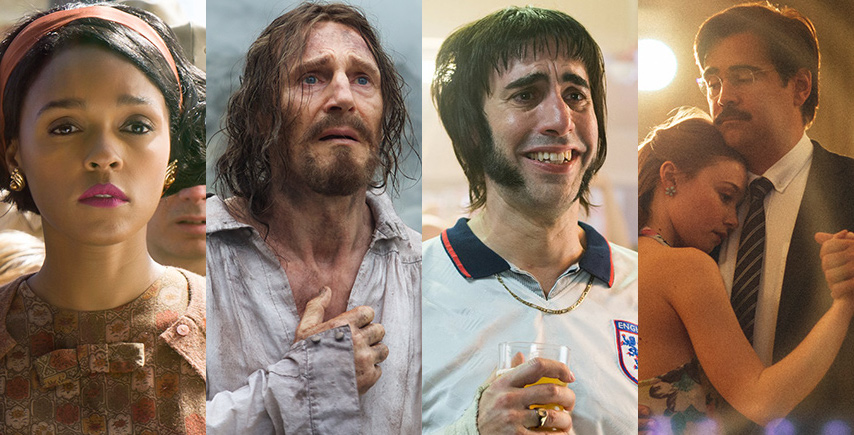
Hopper Stone, Paramount Pictures, Sony, A24
Follow Matt Prigge on Twitter @mattprigge

















